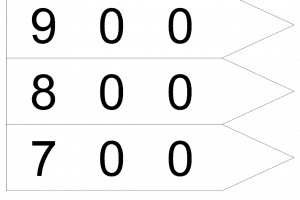Printable Place Value Cards
 Printable Place Value Cards - Set of place value cards that slide on top of each other to make decomposition of place value visible. Great for Kindergarten, first grade, and second grade or for any student needing to understand the basic concept of place value.
Printable Place Value Cards - Set of place value cards that slide on top of each other to make decomposition of place value visible. Great for Kindergarten, first grade, and second grade or for any student needing to understand the basic concept of place value.
Work with numbers 11-19 to gain foundations for place value.
CCSS.Math.Content.K.NBT.A.1
Compose and decompose numbers from 11 to 19 into ten ones and some further ones, e.g., by using objects or drawings, and record each composition or decomposition by a drawing or equation (such as 18 = 10 + 8); understand that these numbers are composed of ten ones and one, two, three, four, five, six, seven, eight, or nine ones.
Understand Place Value.
CCSS.Math.Content.1.NBT.B.2
Understand that the two digits of a two-digit number represent amounts of tens and ones. Understand the following as special cases:
CCSS.Math.Content.1.NBT.B.2.a
10 can be thought of as a bundle of ten ones — called a "ten."
CCSS.Math.Content.1.NBT.B.2.b
The numbers from 11 to 19 are composed of a ten and one, two, three, four, five, six, seven, eight, or nine ones.
CCSS.Math.Content.1.NBT.B.2.c
The numbers 10, 20, 30, 40, 50, 60, 70, 80, 90 refer to one, two, three, four, five, six, seven, eight, or nine tens (and 0 ones).
Understand Place Value.
CCSS.Math.Content.2.NBT.A.1
Understand that the three digits of a three-digit number represent amounts of hundreds, tens, and ones; e.g., 706 equals 7 hundreds, 0 tens, and 6 ones. Understand the following as special cases:
CCSS.Math.Content.2.NBT.A.1.a
100 can be thought of as a bundle of ten tens — called a "hundred."
CCSS.Math.Content.2.NBT.A.1.b
The numbers 100, 200, 300, 400, 500, 600, 700, 800, 900 refer to one, two, three, four, five, six, seven, eight, or nine hundreds (and 0 tens and 0 ones).